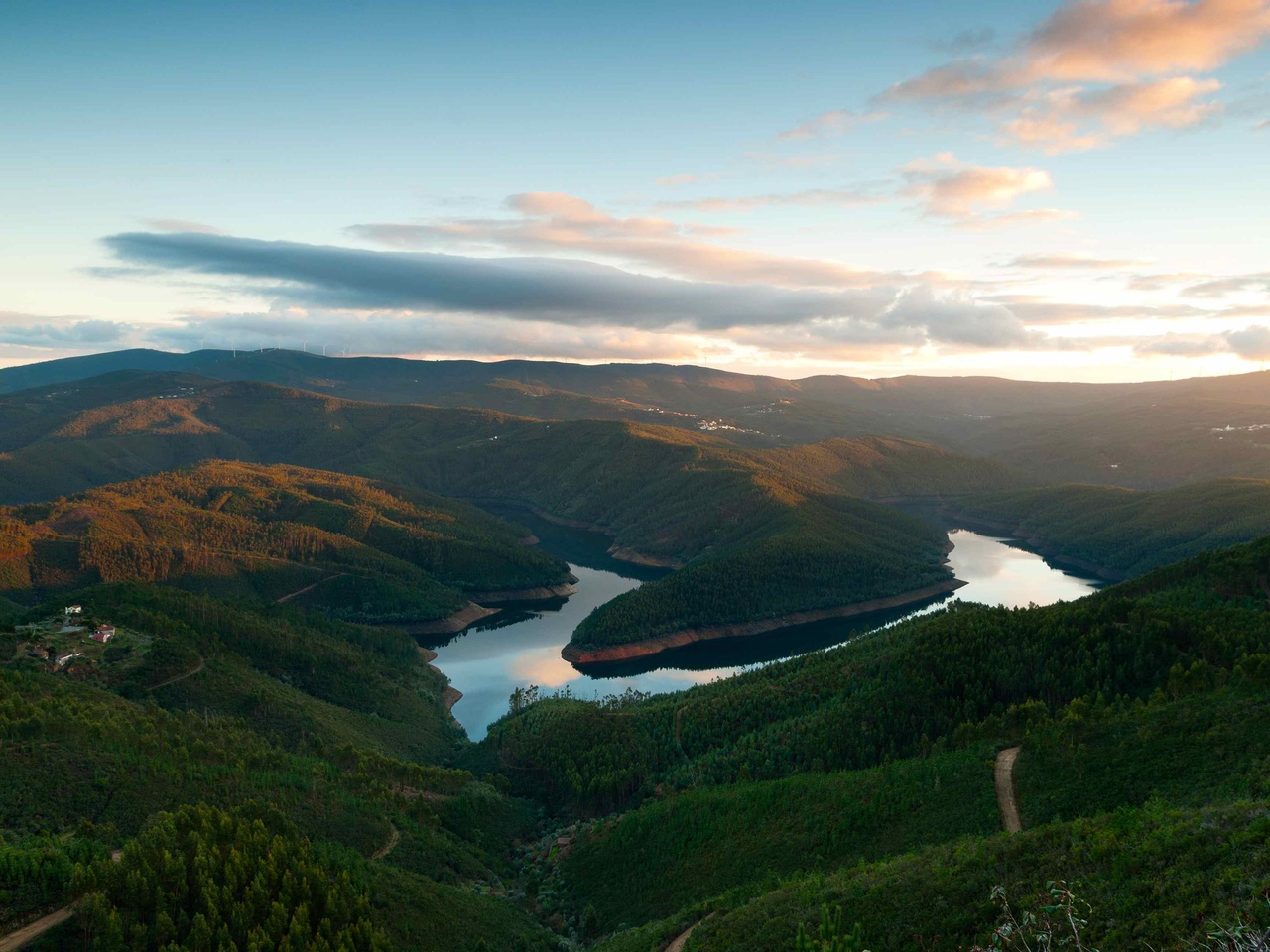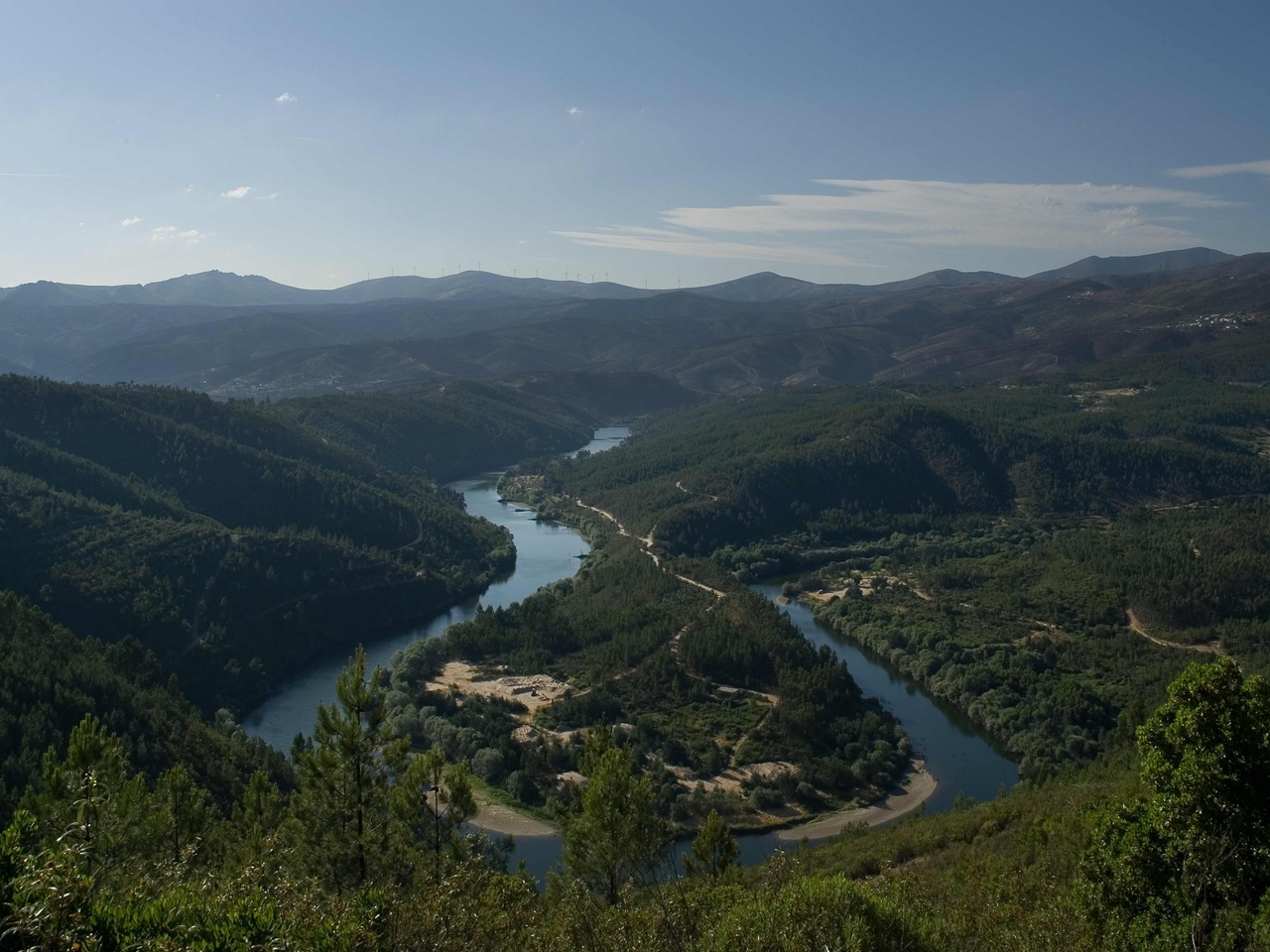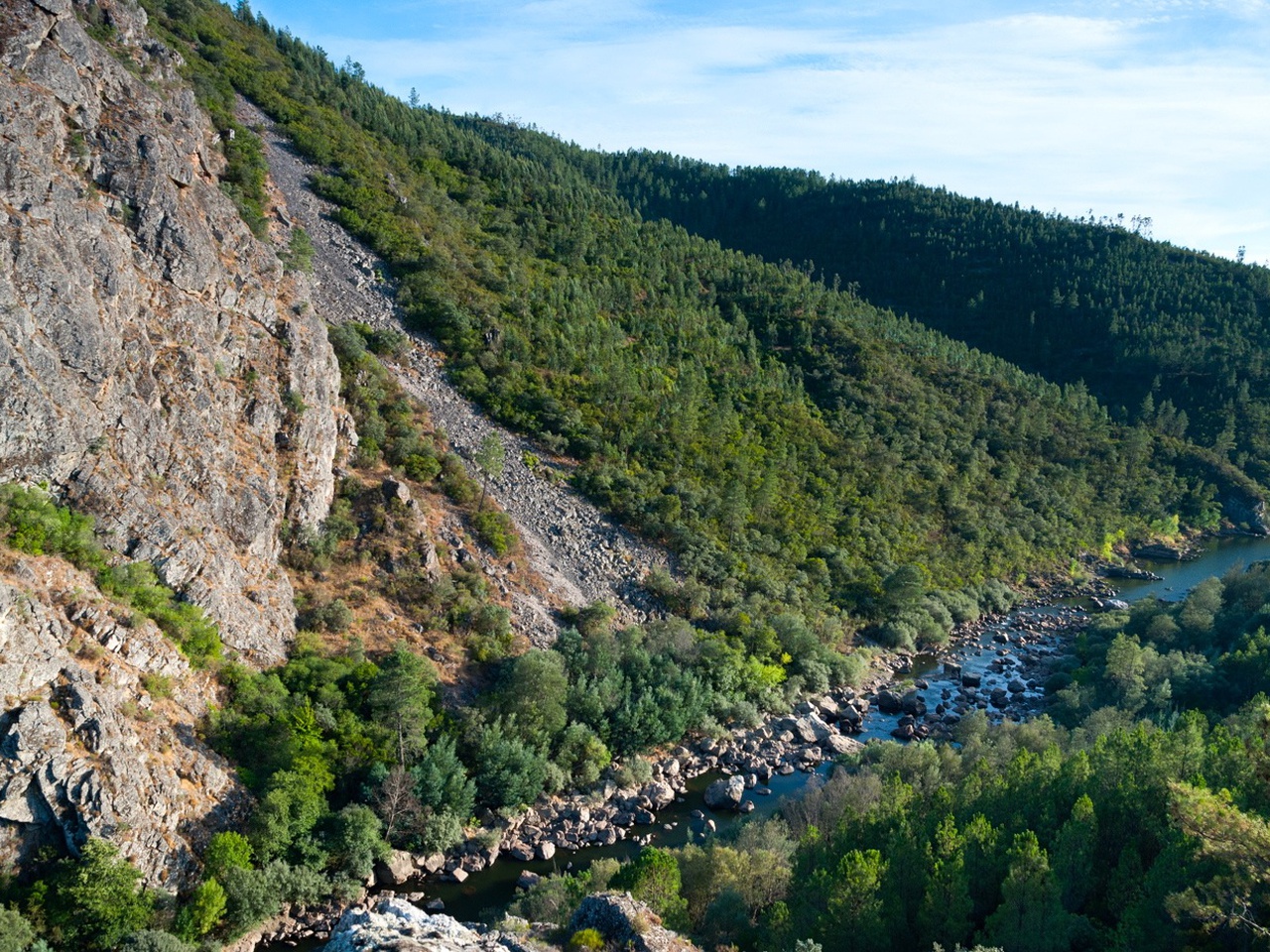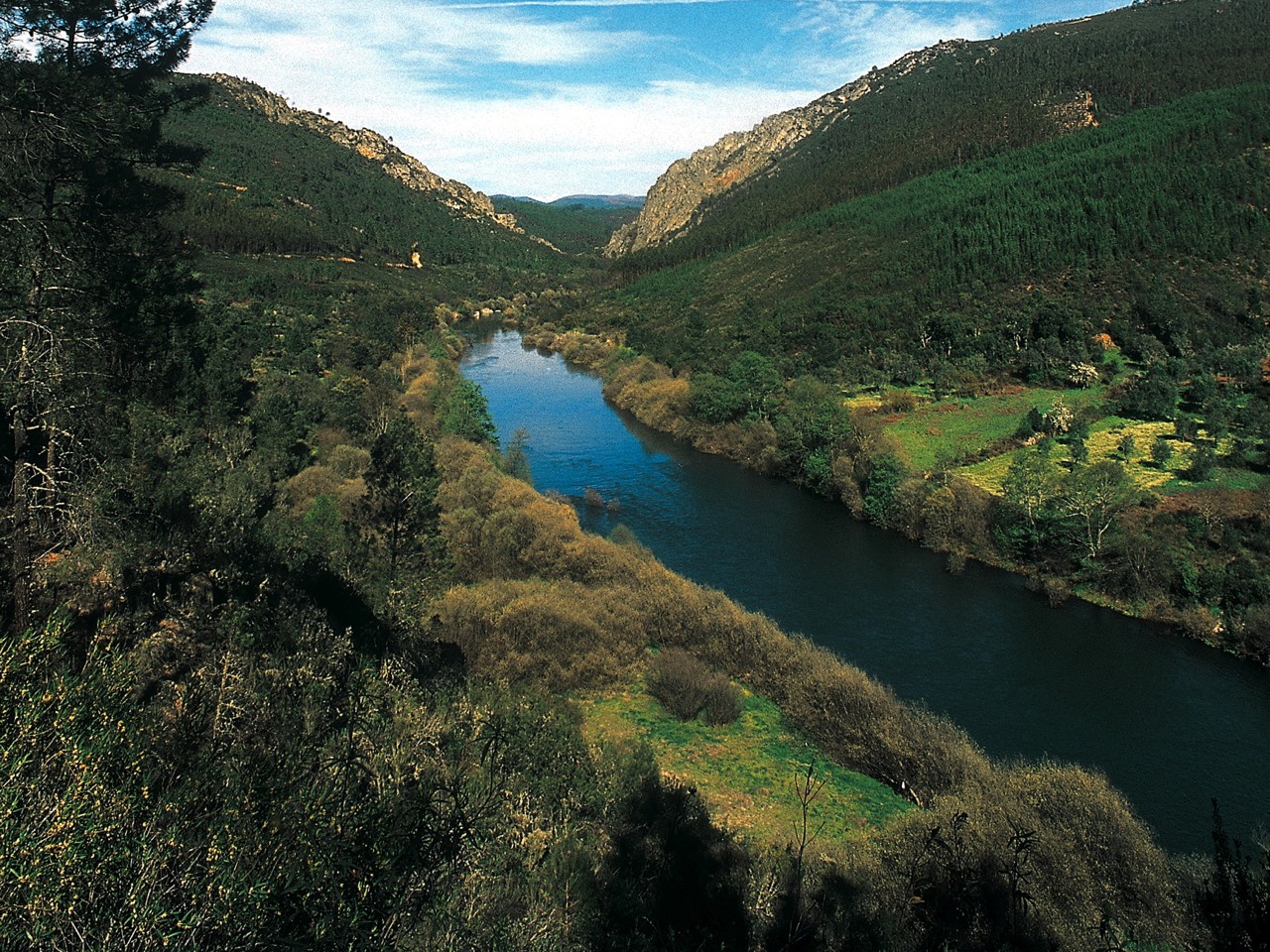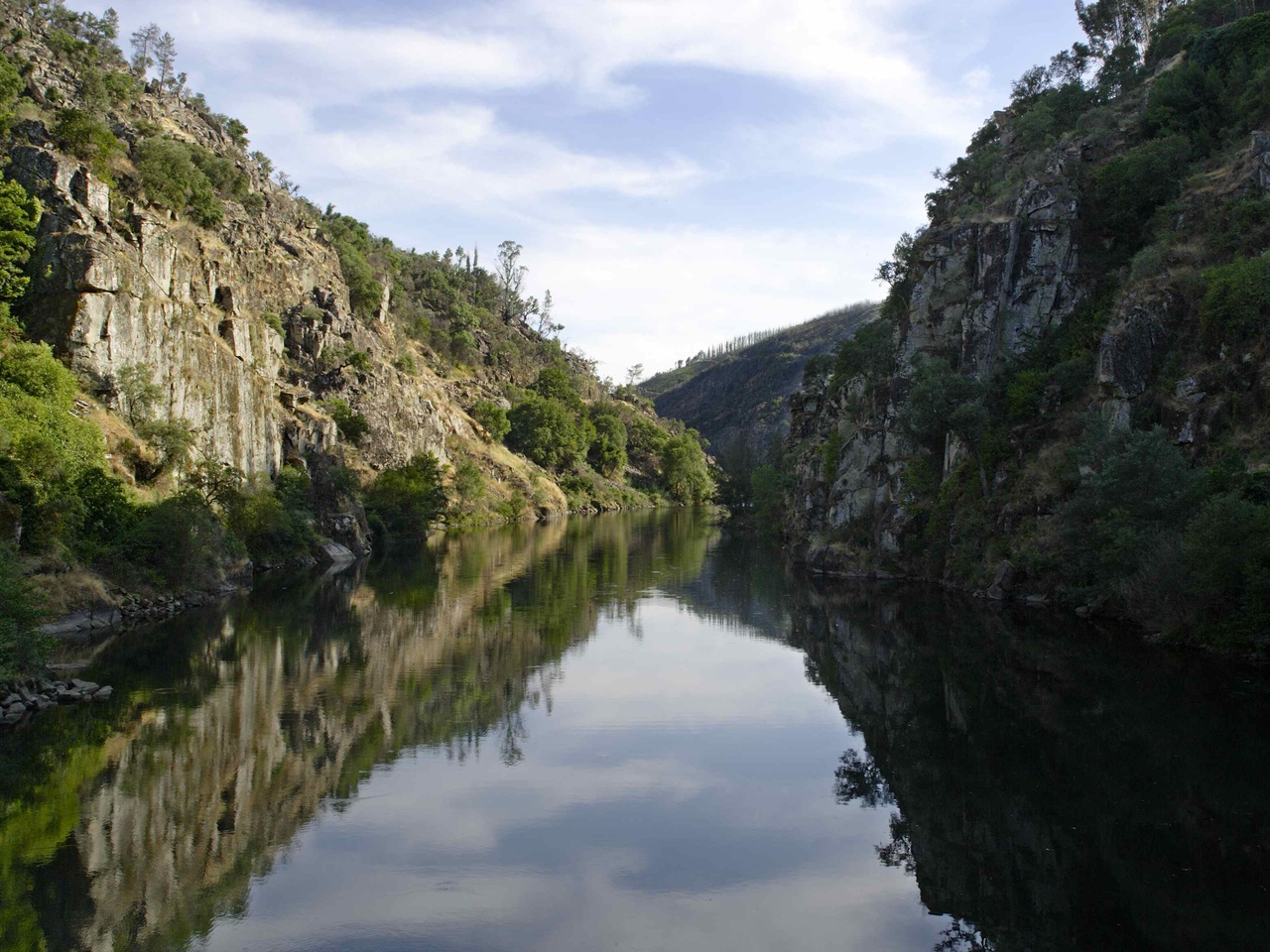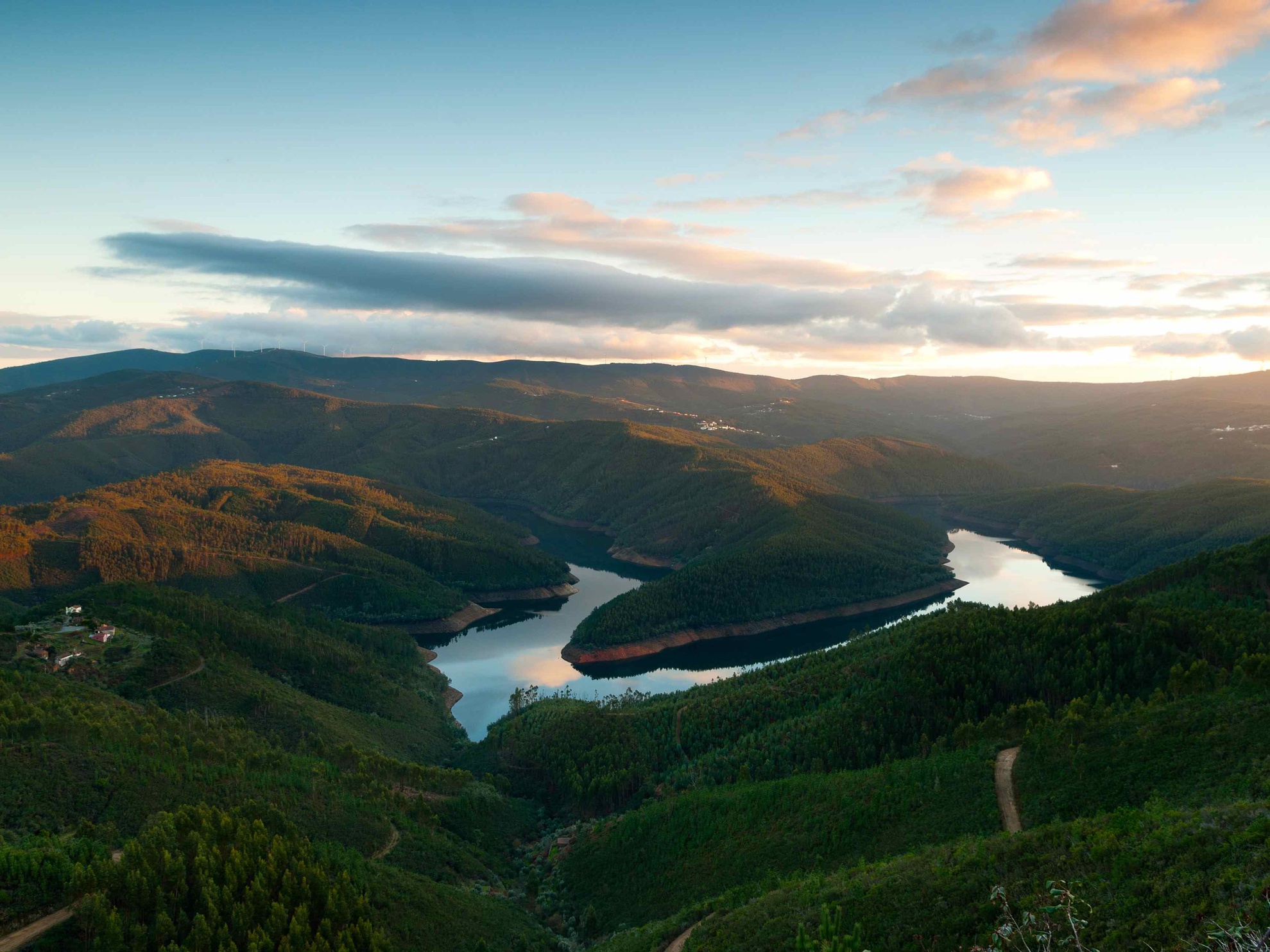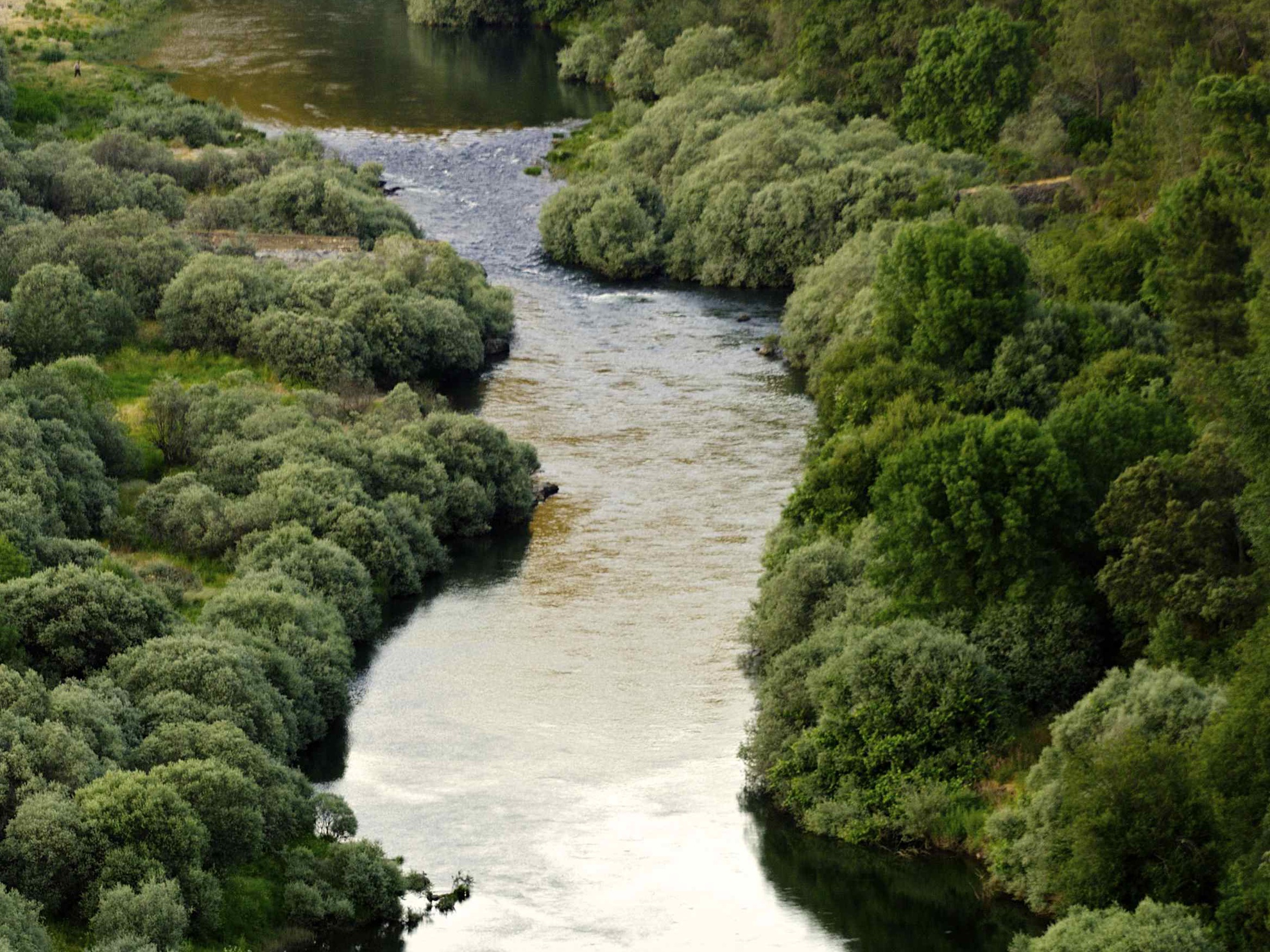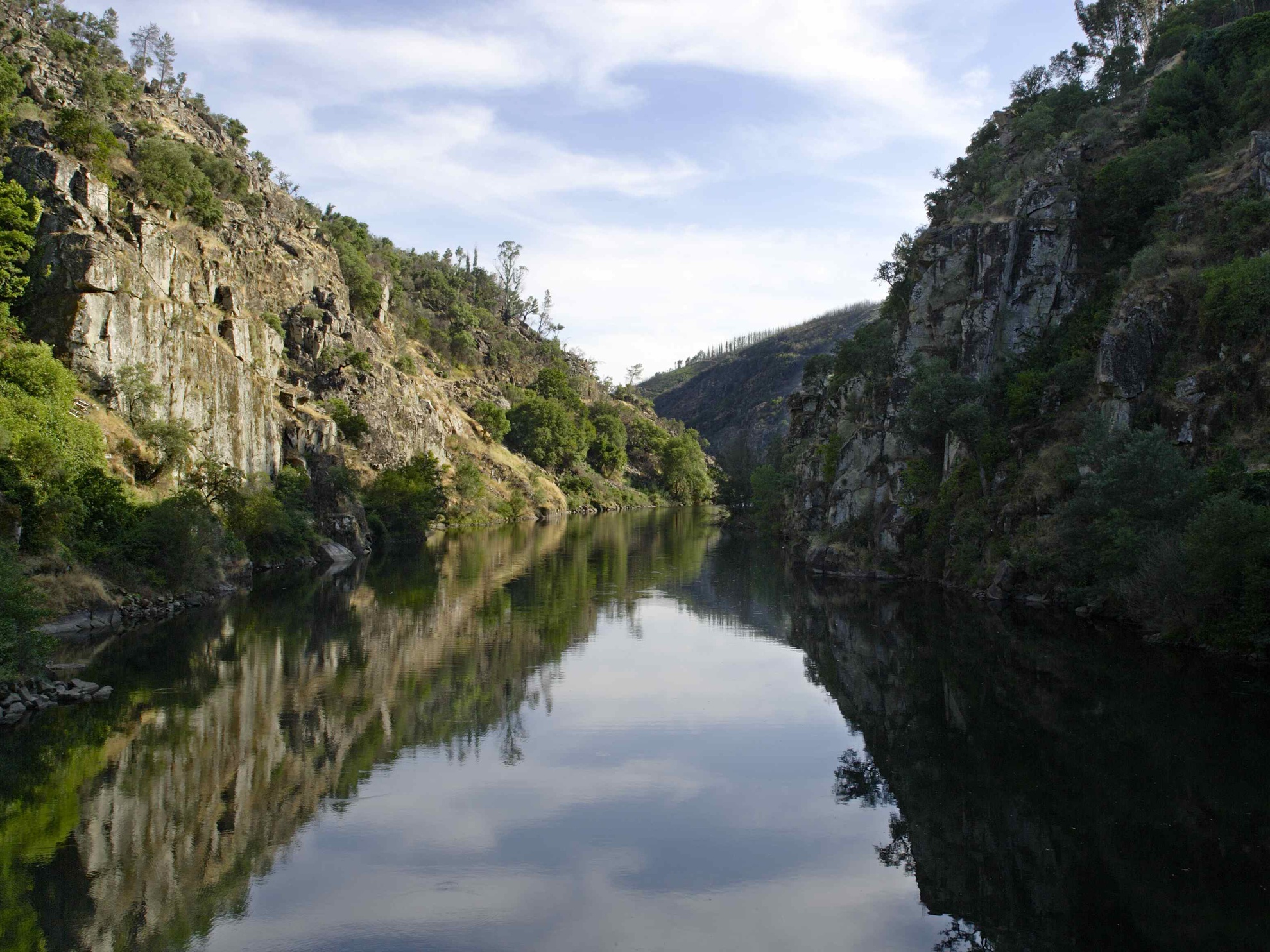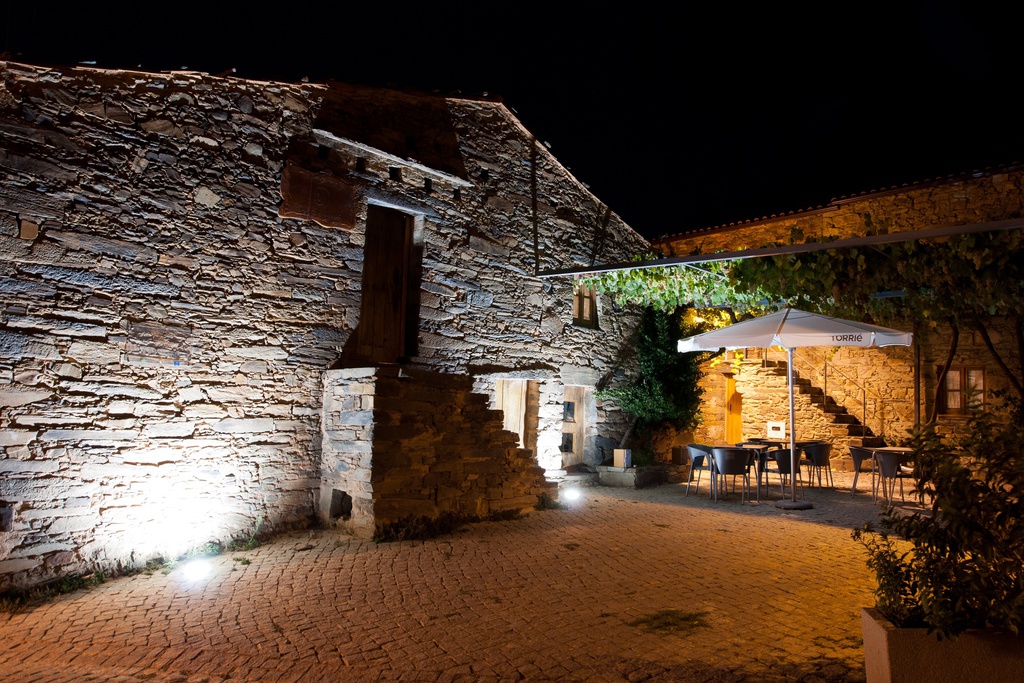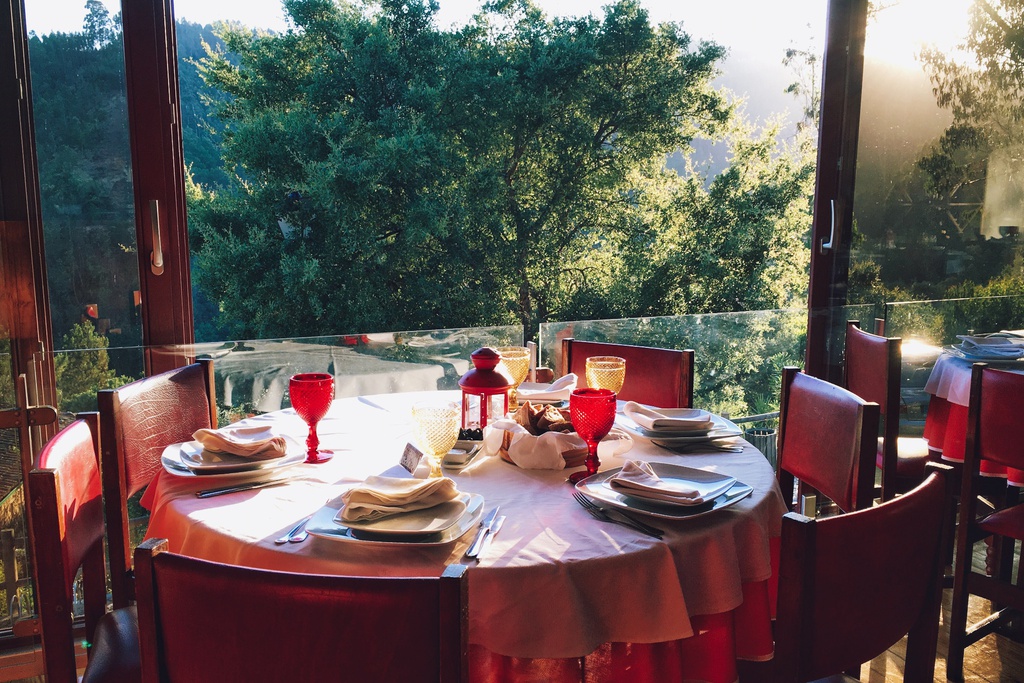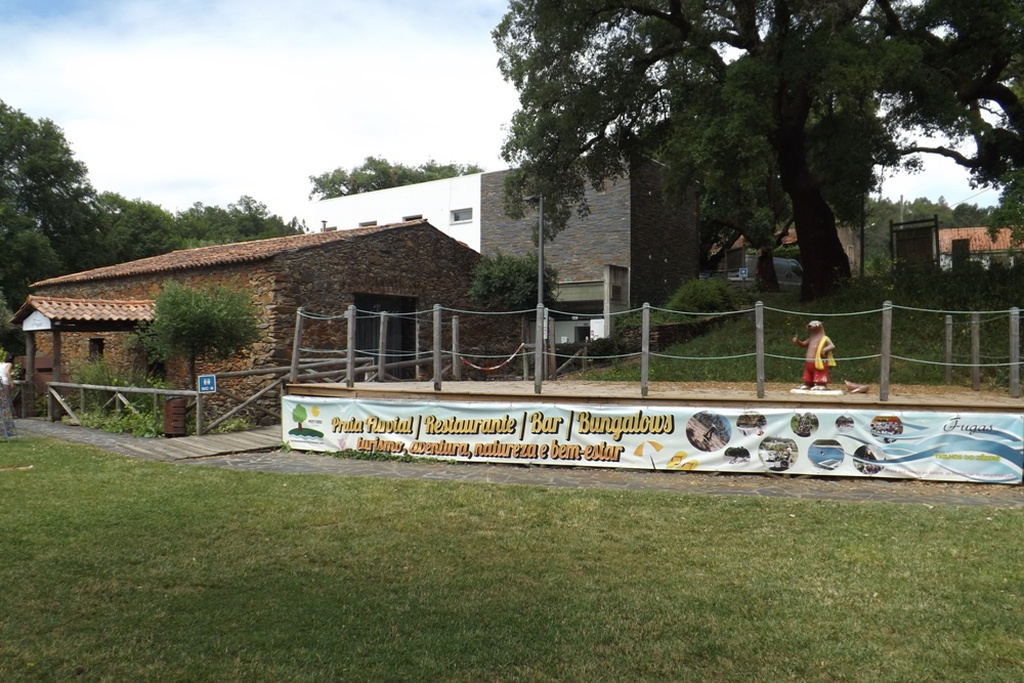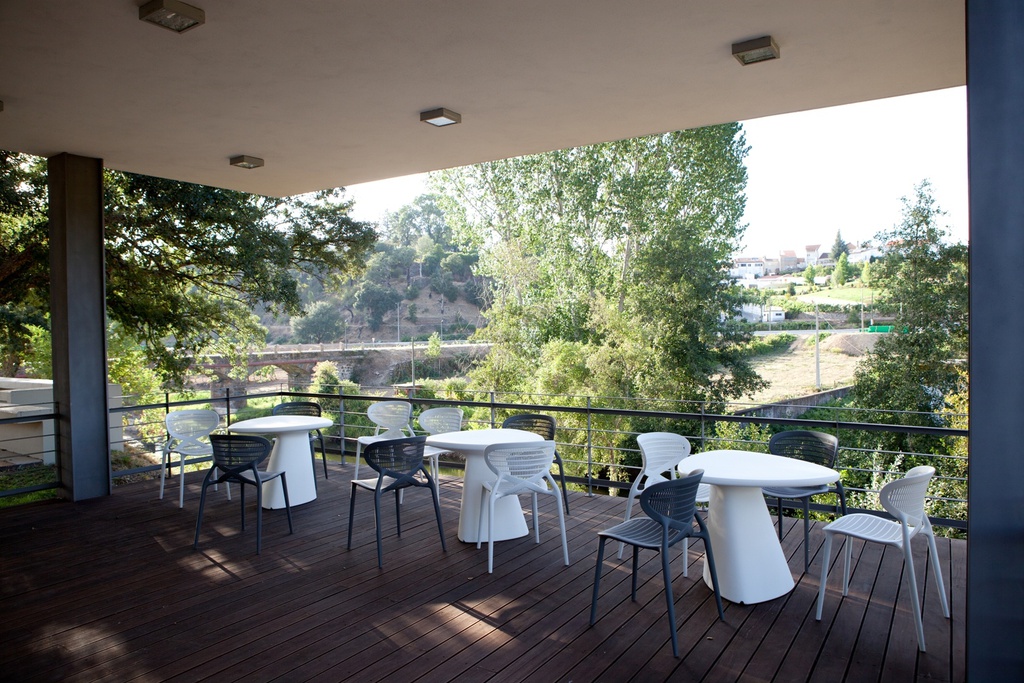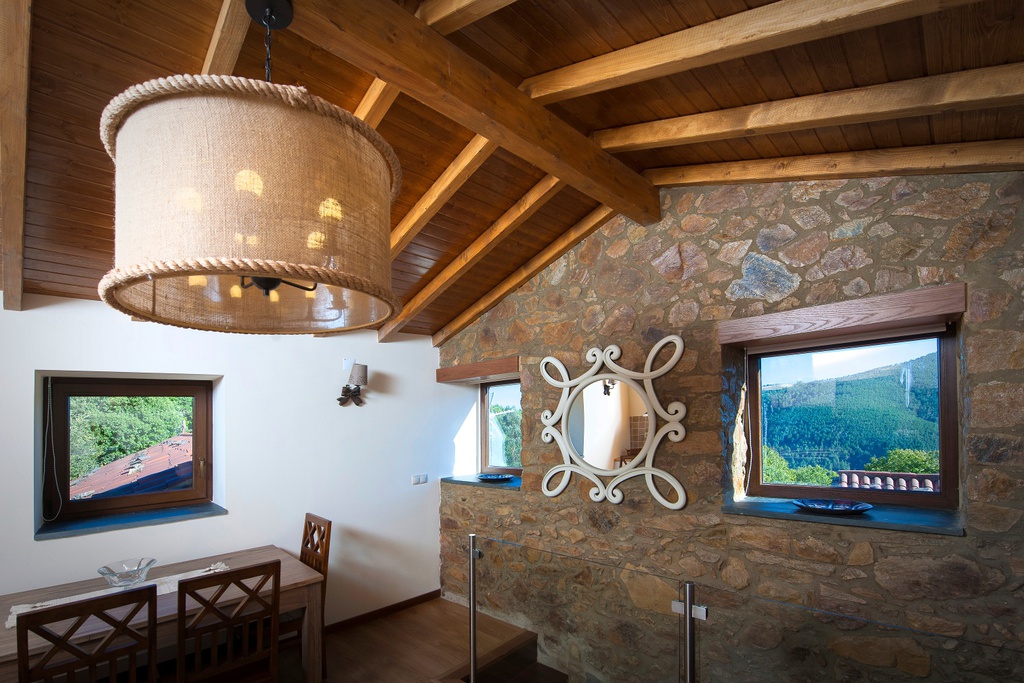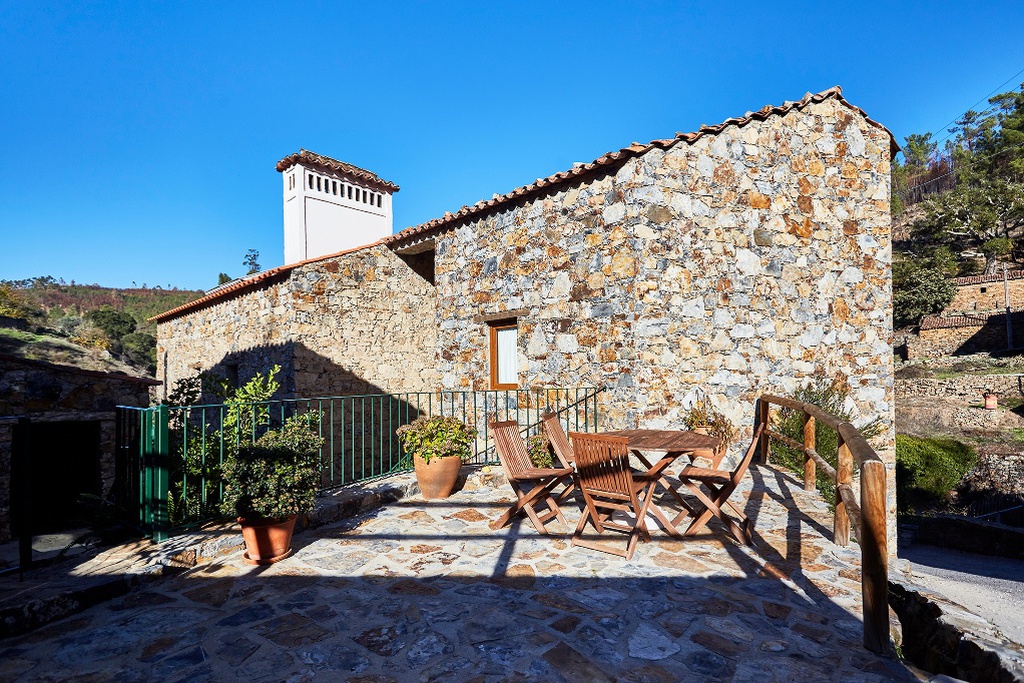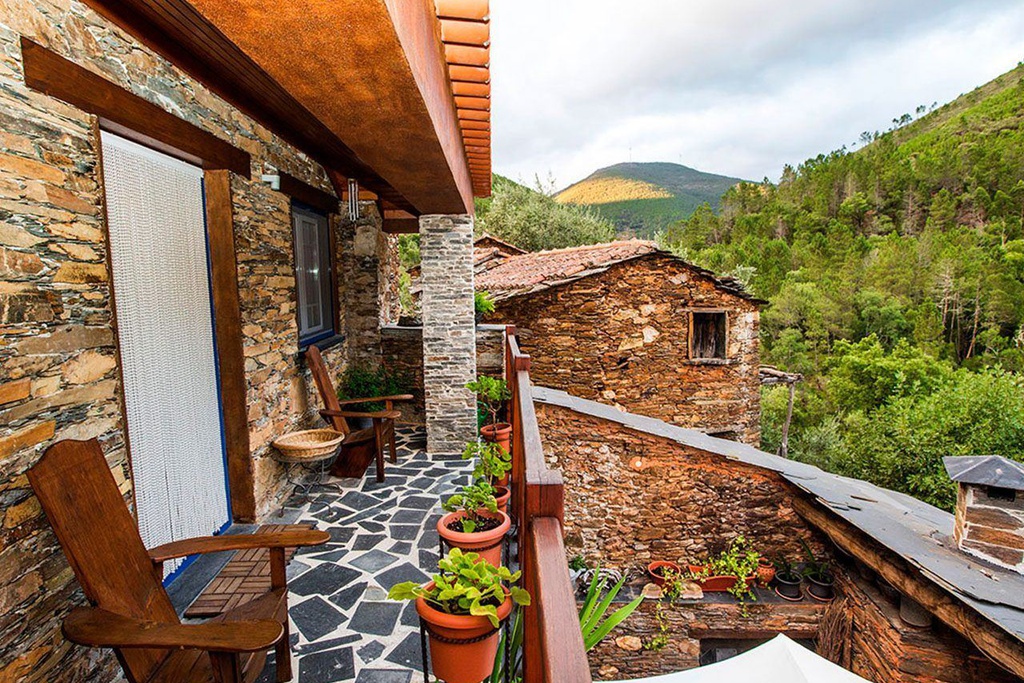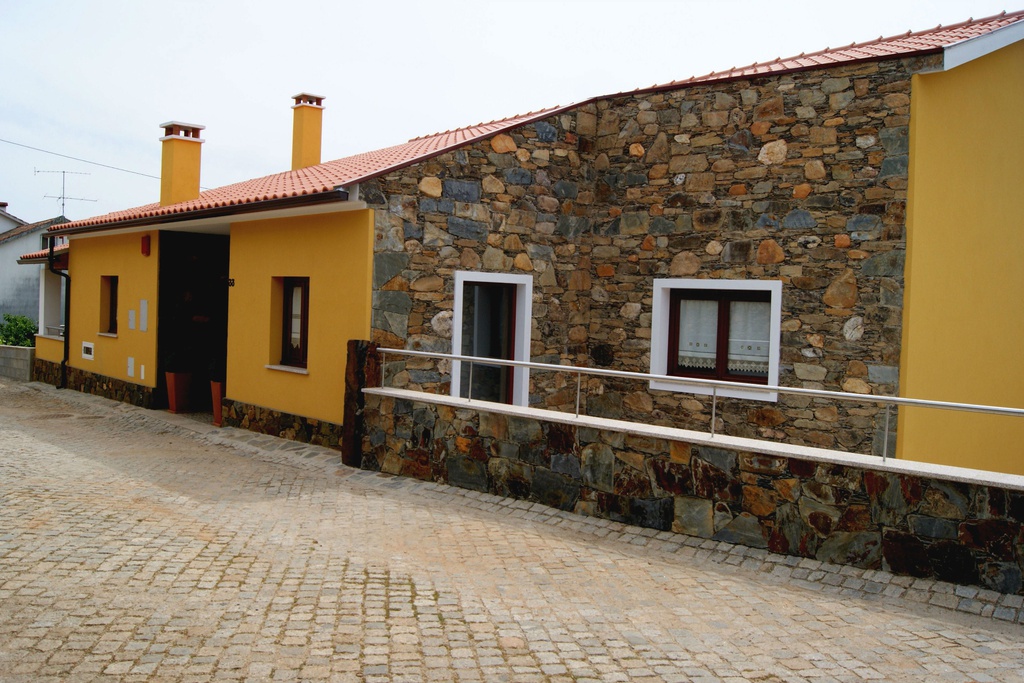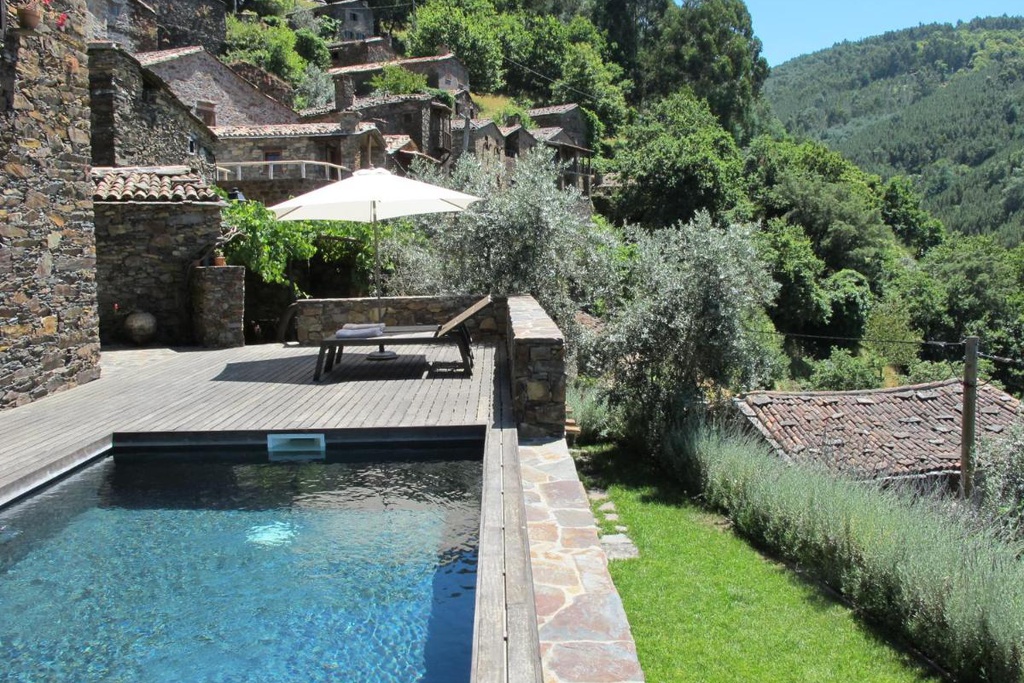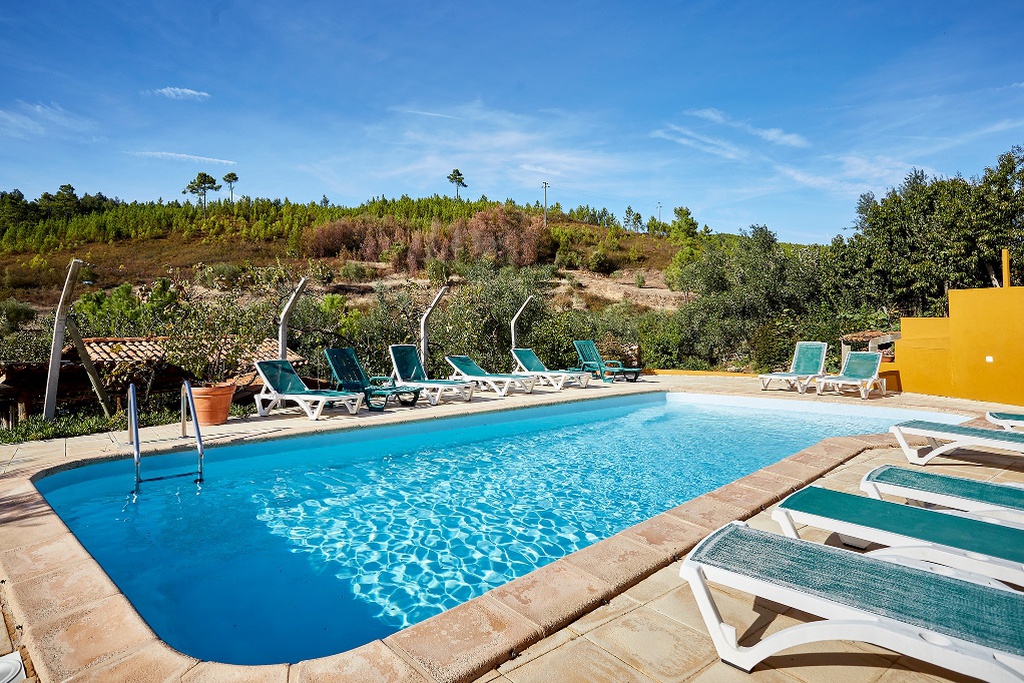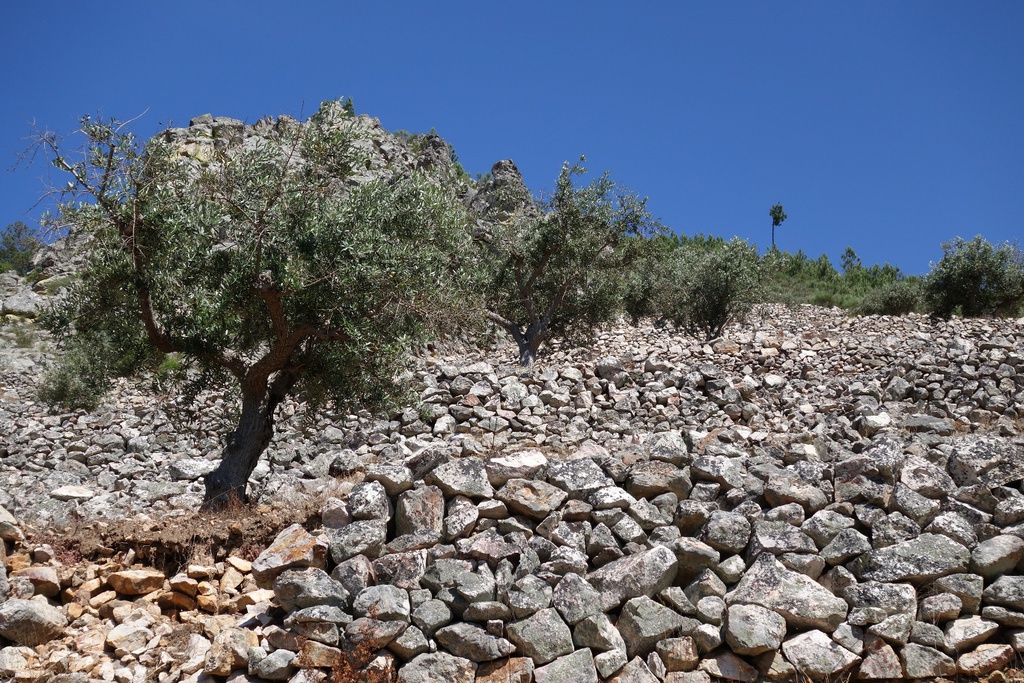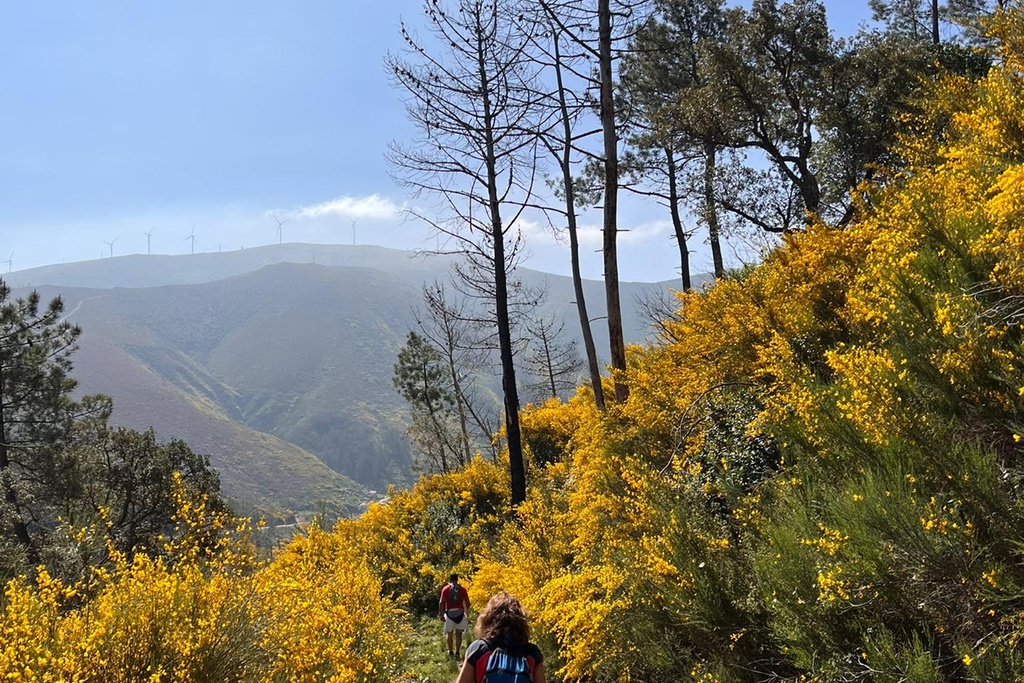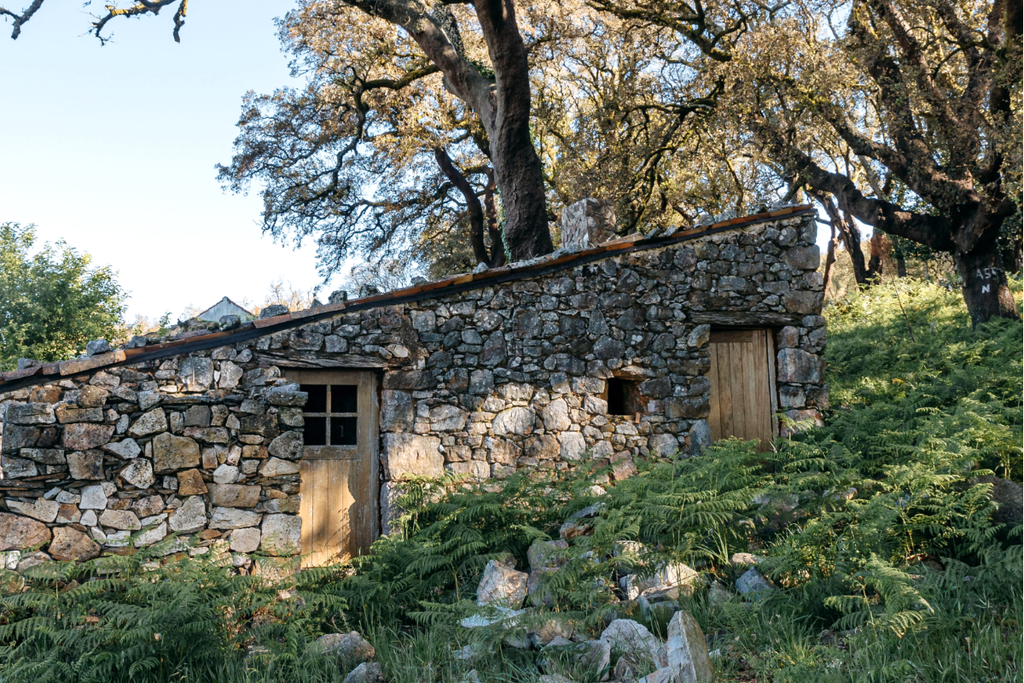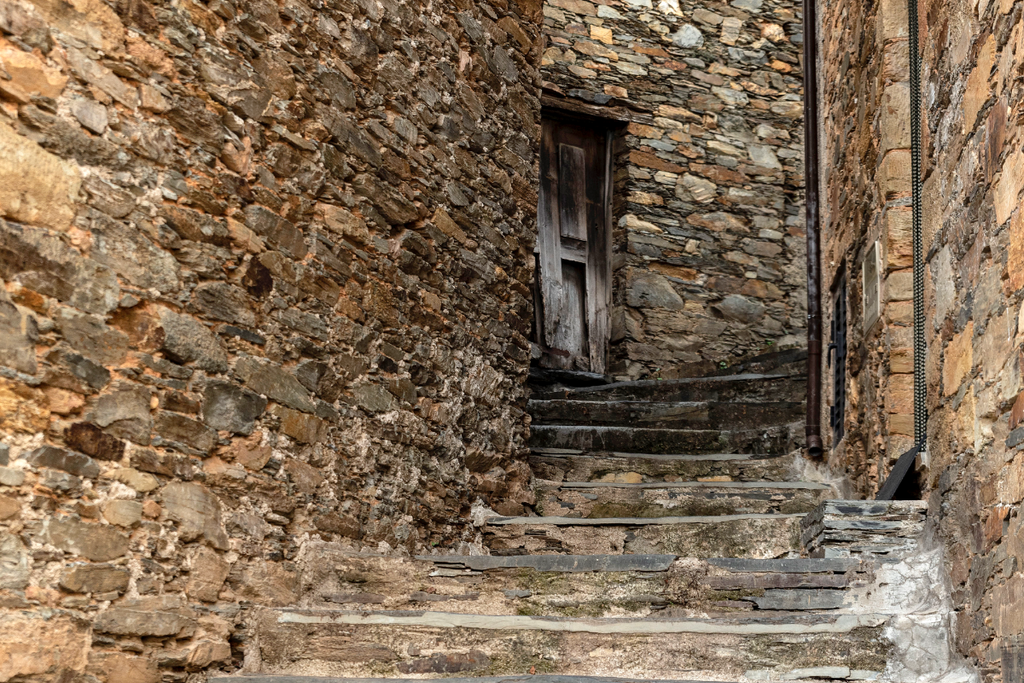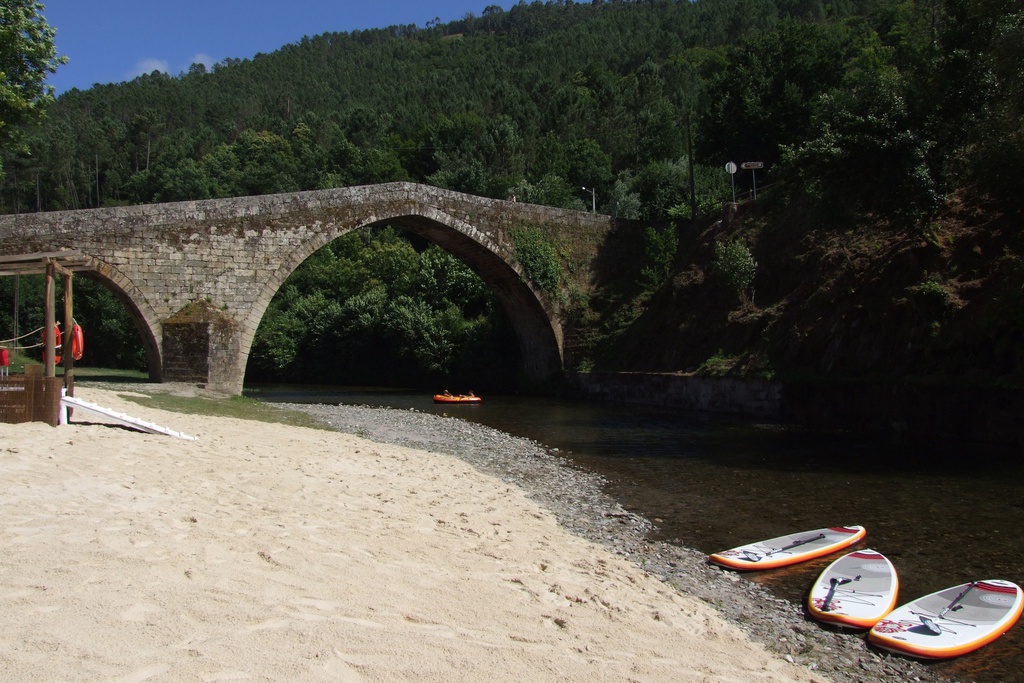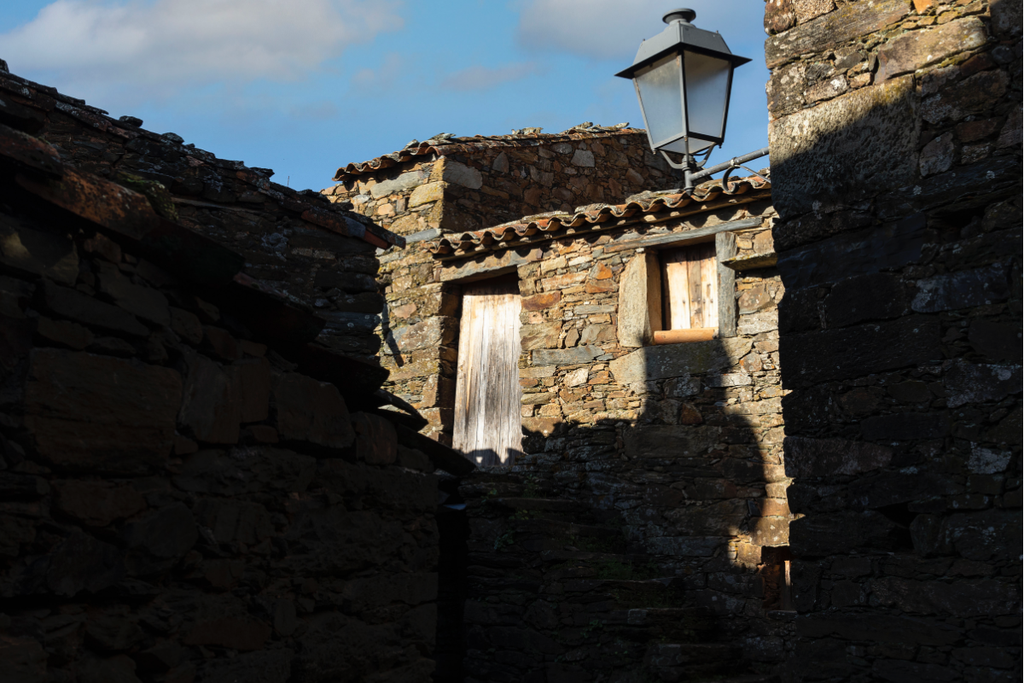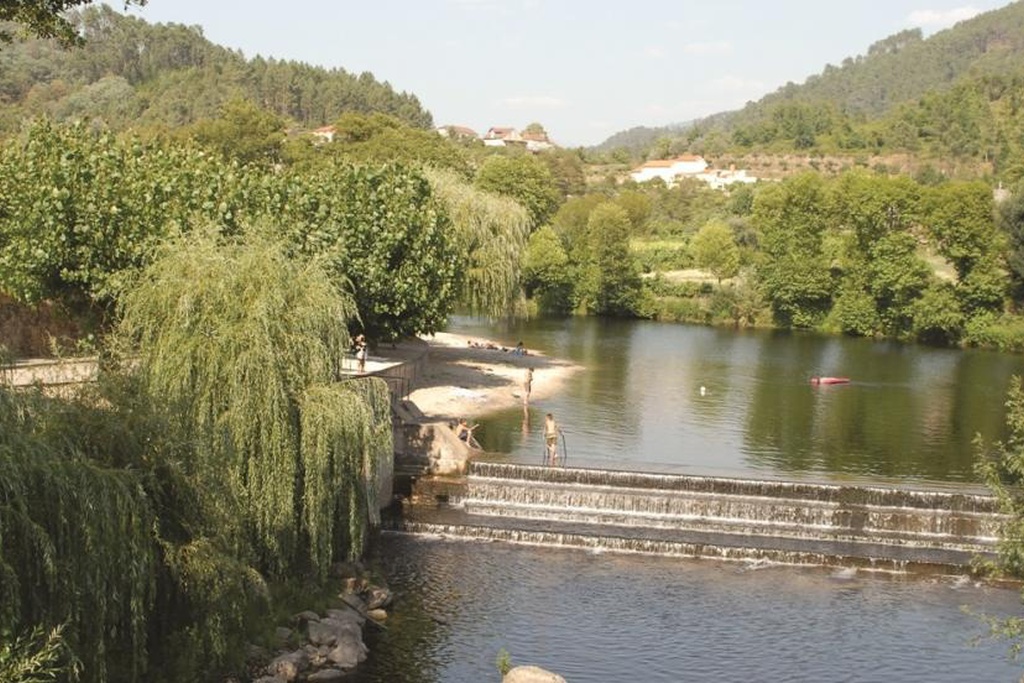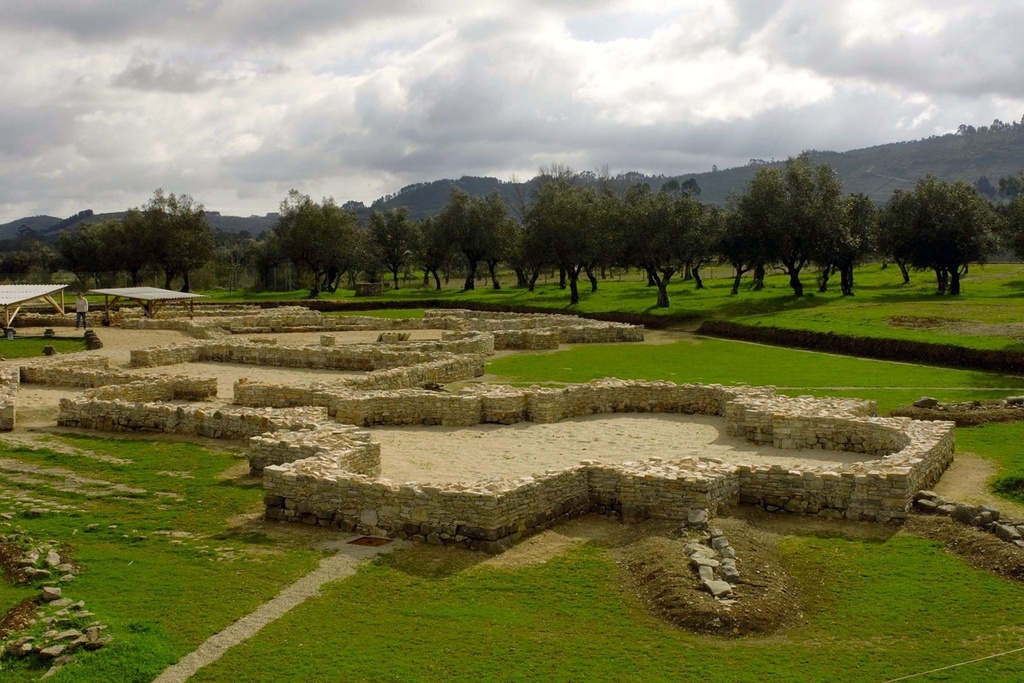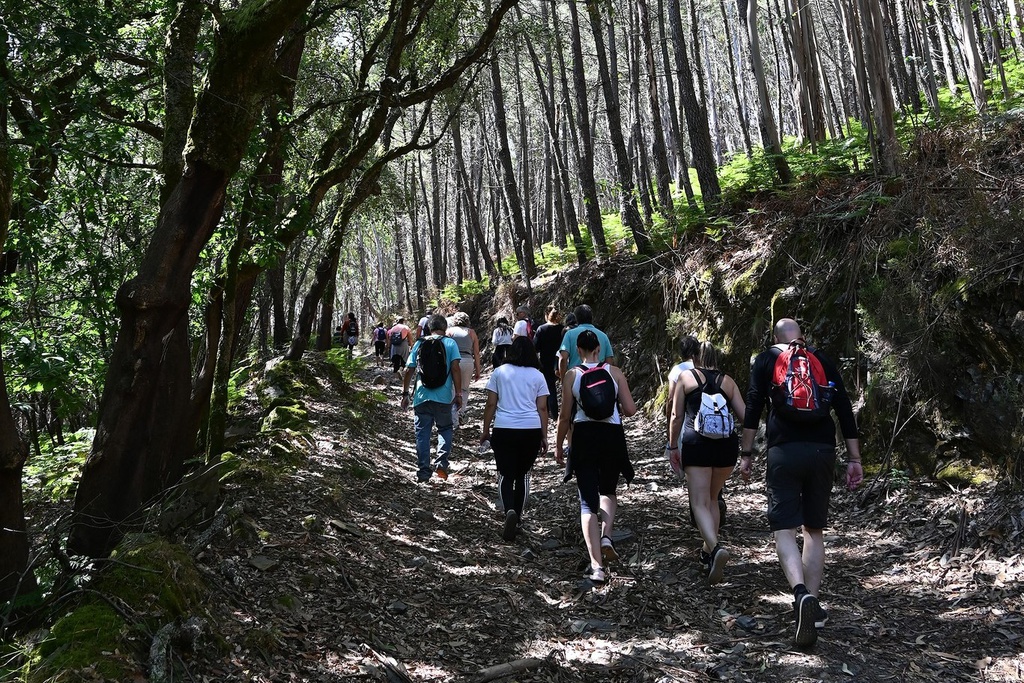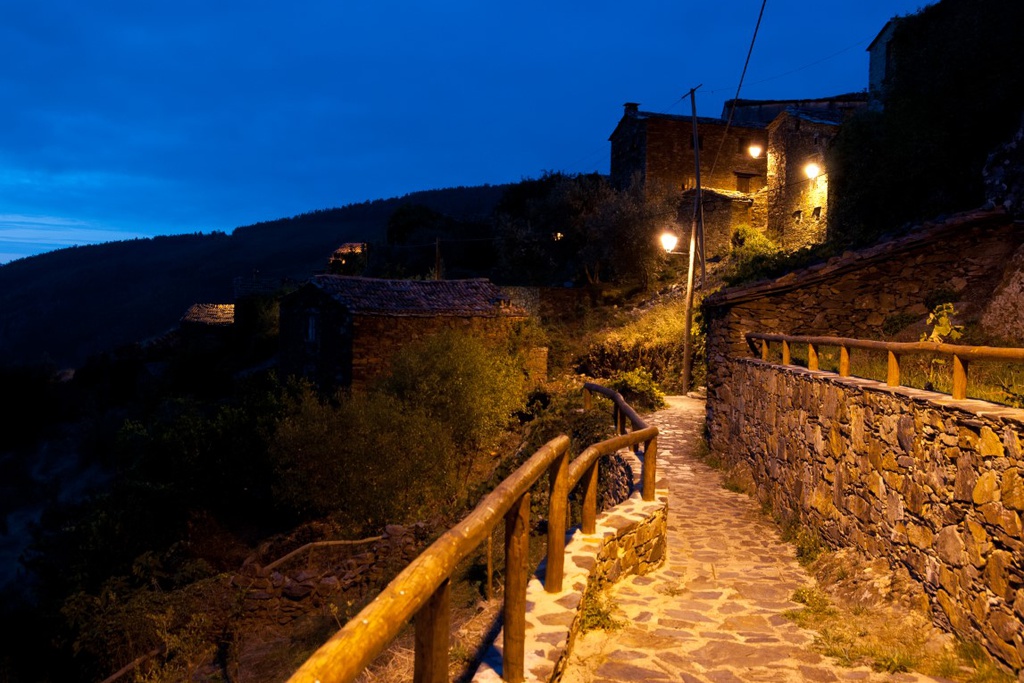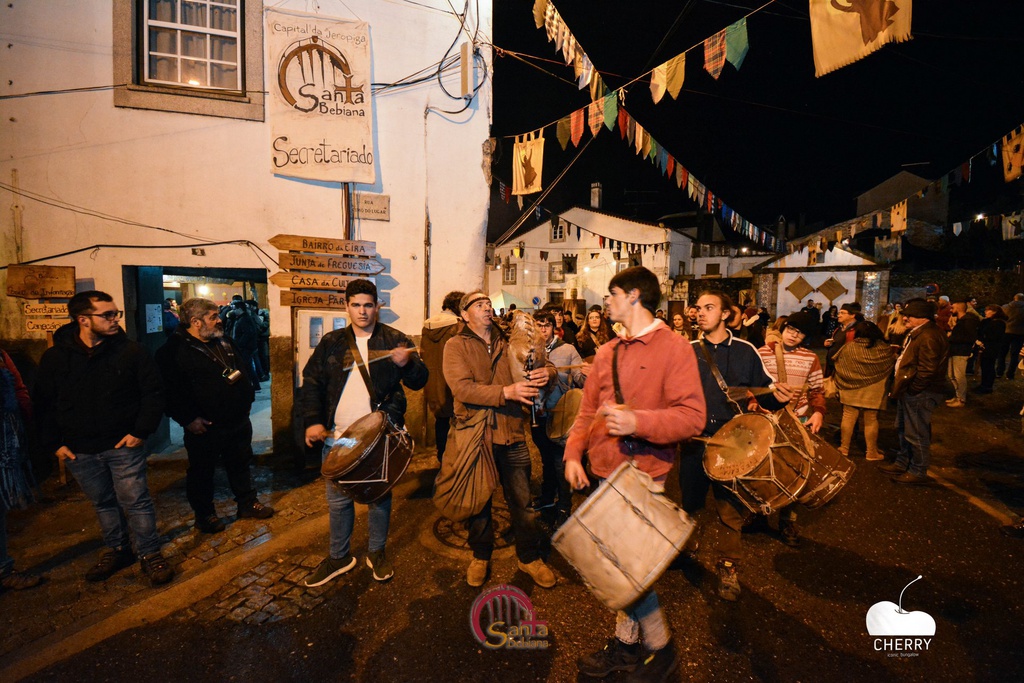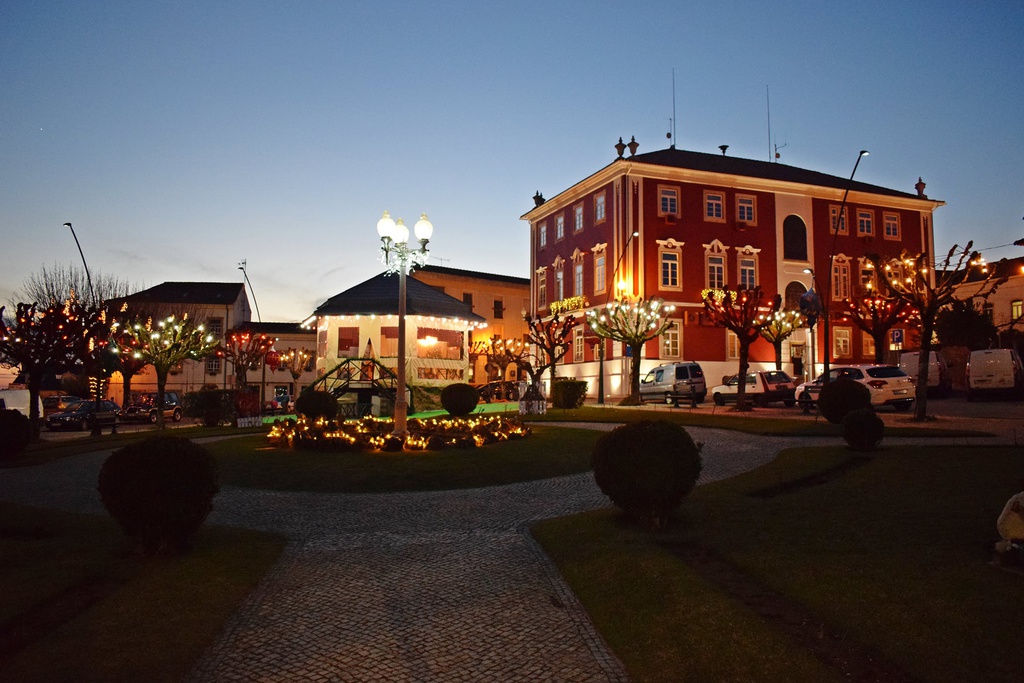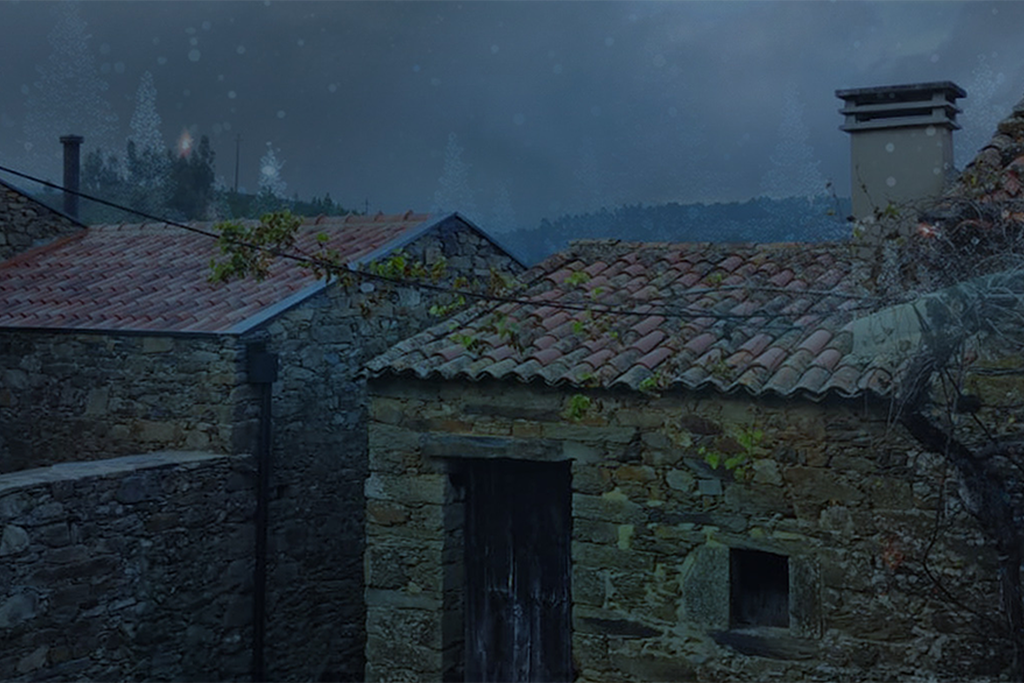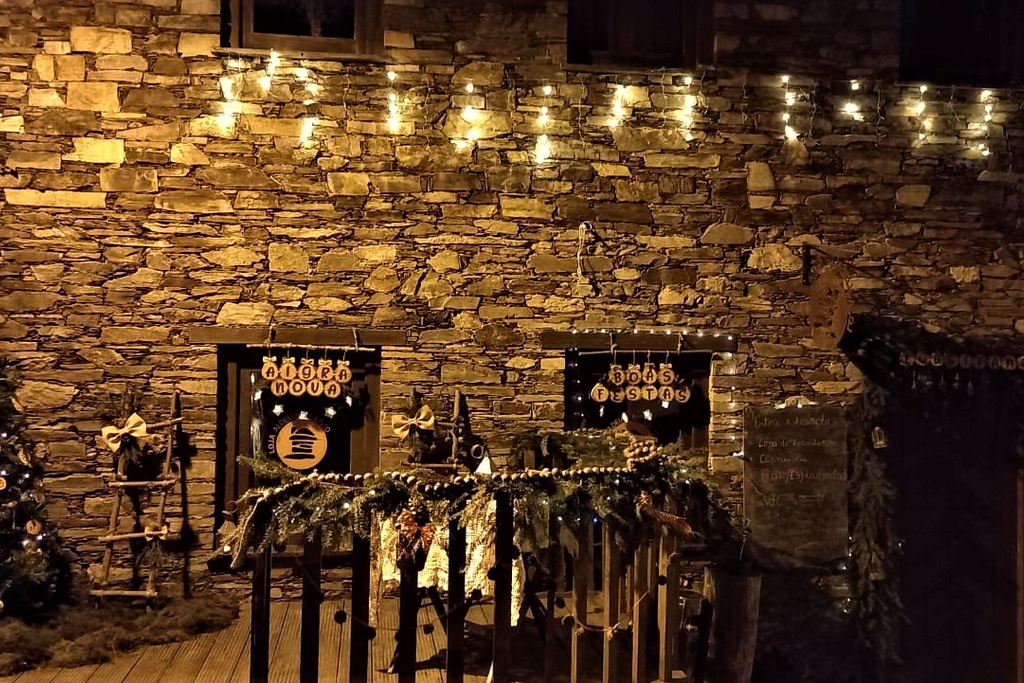The Zêzere River rises in the Serra da Estrela, at about 1900 m altitude, near Cântaro Magro, where the largest glacial valley in Europe begins (13 km). After going down the Serra da Estrela in an erratic course, the Zêzere, now more serene, passes through Belmonte and Covilhã. From here, and almost until it flows into the Tagus at Constânica, after a journey of about 248 Km, it is fed from both banks by the sea of mountains that frame the Aldeias do Xisto. After the Mondego, it is the second largest river in Portugal.
Near Cambas (Oleiros), between the villages of Janeiro de Cima and Álvaro, the Zêzere ceases to be a river and becomes a calm reservoir (Barragem do Cabril), where its waters rest before continuing their journey. It is on this stretch that we find the curves and counter-curves that the Meseta Meridional Naturtejo Geopark named “Meanderings of the Zêzere”.
If it didn’t run through such a deep and winding valley from here to Constância, it would be possible to see that all the reservoirs of the three dams (Cabril, Bouça and Castelo de Bode) form an immense artificial lake, spanning more than 5,800 hectares.
More than separating, the Zêzere is the common denominator of the identity of the six Aldeias do Xisto that are contained within its hydrographic basin.
Its importance in the context of the country’s hydrography, the diversity and quality of the habitats it creates and crosses and the heritage treasures found in its surroundings, justify the establishment of the Great Route that will soon bear its name.
WHICH APPEARED FIRST, THE RIVER OR THE TREE?
“... and the zenzereiro (Portuguese laurel), a tree the river named after it, because it is created only in it, large and crowned, with very green leaves in the shape of a laurel tree, the flowers of which are white, and which look like a bunch of grapes in blossom...”, Miguel Leitão de Andrade (1629). Today still, Portuguese laurel occurs in several places in the Zêzere hydrographic basin, some of them very close to its waters. Some specimens can be seen in the vicinity of the cemetery in Pedrógão Pequeno.
Miguel Leitão de Andrade, in 1629, when referring that the river “... being called Ozeraco, was now known as the Zênzere...” gives us a hypothesis for the evolution of the river’s name. But elsewhere in his work he indicates that it was the river that gave its name to the tree that was abundant on its banks and slopes. At least we have learnt that since the 17th century the name of the river evolved from Zênzere to Zêzere.



